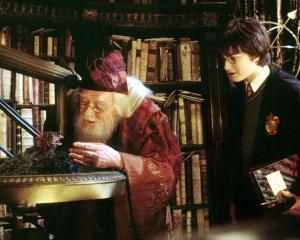
Later communications revealed he worked for a government department called Toka Tū Ake. This left me scratching my head. Who are Toka Tū Ake?
Puzzled, Kingston.
Equally mystified, I googled the name and was taken to a website titled Toka Tū Ake EQC.
The name is a mix of te reo and the acronyms beloved by Government. (The websites landing page provides no secondary English title).
Click on its “What We Do” button and it spins through to inform you that Toka Tū Ake EQC provides us with government earthquake insurance. It was once known as the Earthquake Commission.
Some of the communication problems from the te reo retitling of government departments aren’t just the obvious ones of public comprehension. Should your home be munted, you’ll discover that Directory Assistance (018) has no listing for Toka Tū Ake.
Nor does 018 recognise Manatu Hauora, the “Ministry for Health”, which is New Zealand’s largest organisation.
Google the words “Department of Health” and it is clear Government multi-naming has also confused the search engine’s location algorithms. Google dispatches this inquiry to a Zambian website about HIV, AIDS and tuberculosis.
The Ardern Government is well in to one of the most massive name rebranding exercises witnessed in the world of marketing.
Think of KFC, the Warehouse, Countdown and the Mad Butcher all attempting simultaneous name changes, and you get a small hint of the scale.
This huge and expensive undertaking has been little discussed. Nor has the electorate been told how far name changes are to eventually penetrate. We do know that each government department, and all divisions, are by now re-branded to both te reo and English titles, with no clear pattern as to which is given precedence.
In cases such as Waka Kotahi (the Ministry of Transport), it has become obvious the te reo title is being transitioned into the “public use” name.
How many other department names will be fully moved to a te reo title?
We don’t know. The process is directed from Wellington, but knowledge of the “how” and “by whom” is not clearly available. Put simply, it is guarded.
The main issue is not, repeat NOT (!) an arrival of te reo in the language of government.
It’s the mad comedy created when a rushed, shambolic, and secretive process is used to bludgeon through serious cultural changes that touch the sensitivities of everyone.
And so we endure “change by stealth” — the process now commonplace to new interpretations of the “spirit” of Waitangi.
Sitting between the races at the 1840 treaty table, Captain Hobson doubtless played a straighter hand than the Government does in 2022.
Dear Uncle Norm,
Allow me to wind you up. Which is the government organisation whose lead title has become Te Tatau o te Whare Kahu?
Just Teasing, Portobello.
The answer is the Midwifery Council. There isn’t a better example of how a one-size-fits-all approach to title changes results in bureaucratic high comedy.
Dear Uncle Norm,
I gather Arrowtown has Simon O’Neill, “the Wagnerian tenor of his generation”, returning for a December 8 concert in the township’s Athenaeum Hall.
I know Arrowtown managed to “steal” him in 2020, when Covid-19 bans meant he couldn’t fly to booked performances with the Berlin Philharmonic.
O’Neill’s voice has just won him a 2022 Grammy Award. I couldn’t stand to miss him, so we’re coming over from Wanaka for the concert but how on Earth did Arrowtown lure him back? It’s not quite the centre of the universe.
Simon O’Neill Fan
A combination of luck and connections. O’Neill has a short gap in NZ post his BBC Proms and Sydney Opera House bookings, and before he returns to New Year engagements in London and Munich. And he enjoys family connections with Arrowtown.
The first time he appeared in Arrowtown, I had the job of doing an on- stage chat to kick off his second half. O’Neill sat at a piano on the fringe of my eye-line.
“This is a small 250-seat hall. Are you singing at the same volume as for say, the New York Metropolitan Opera, where your audience is nearly 4000?” I asked.
Good question?
Well, perhaps not. “Of course it’s the same,” said O’Neill. I heard him play a chord. Then he let rip.
My right ear, the one nearest to the mighty throat, is somewhat deaf. Nonetheless, it took a fortnight to recover.
The opera theatres of London, New York and Berlin are home to the world’s finest voices.
But these fabled venues can’t nearly match the experience of hearing one of the very best inside a much smaller more intimate theatre. And O’Neill rates the Athenaeum’s acoustics.
Bad luck if you can’t make it.
- John Lapsley is an Arrowtown writer










